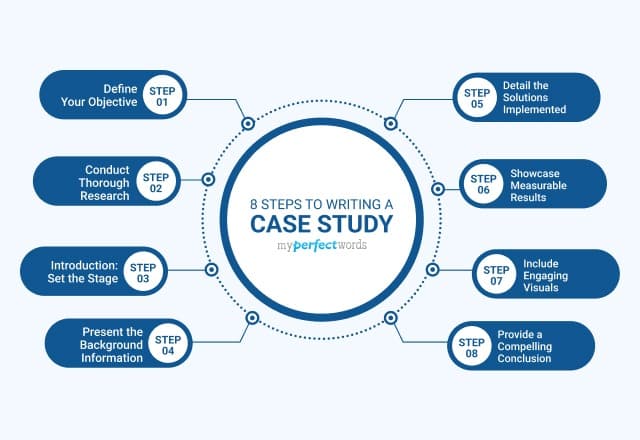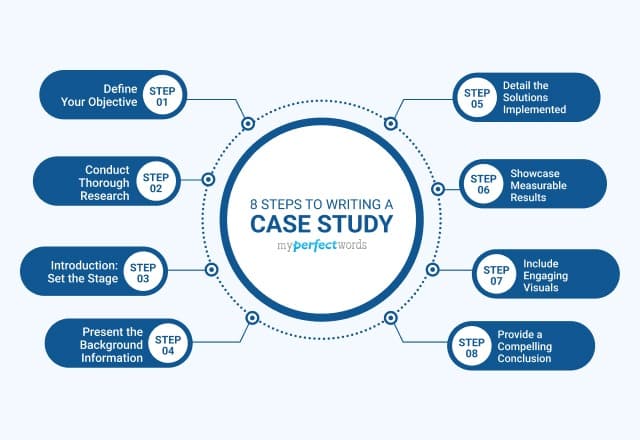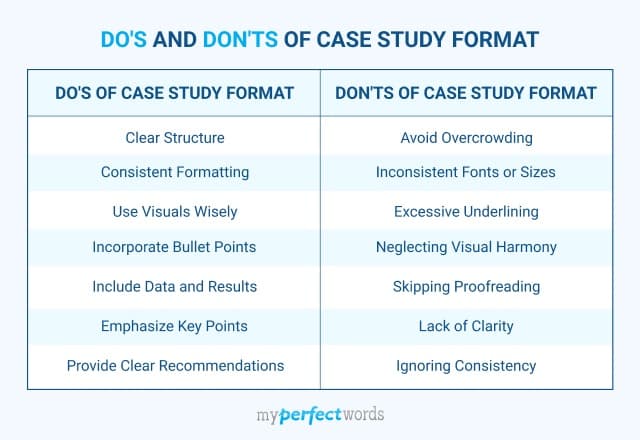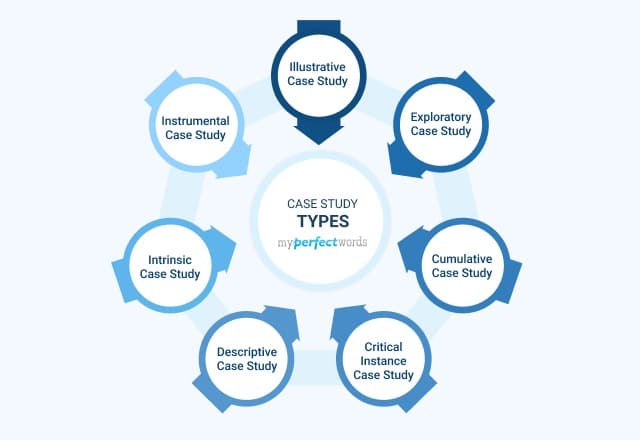You’ve been asked to write a case study, but where do you begin? It might seem hard to handle, especially if it’s your first time. Should you dive right into the details or plan carefully first?
The good news is that this blog has the solution! By following the steps here, you’ll learn how to write a great study in an easy and organized way.
Whether for business, school, or research, this guide will walk you through every part of the process.
Ready to begin? Let’s get started!
On This Page![]()
- 1. What is a Case Study?
- 2. Types of Case Studies
- 3. Key Components of a Case Study
- 4. 7 Easy Steps to Write a Case Study
- 5. When to Do a Case Study
- 6. Types of Case Study Methods
- 7. How to Create a Title Page and Cite a Case Study
- 8. Examples of Well-Written Case Studies
- 9. Final Checklist and Things to Avoid in a Case Study
What is a Case Study?
A case study is a detailed look at a real-life subject like a business, a person, or a problem. The main purpose is to understand the situation better and provide useful insights or solutions.
A case study is an in-depth connection between theory and practice by showing how things work in real life.
Purpose of a Case Study
- Detailed Analysis: A case study gives a deep look into a specific issue, offering more insight than surveys or general studies.
- Real-Life Example: It applies theories to real-world problems, showing how things work in practice.
- Solving Problems: Case studies focus on finding and solving problems, offering practical solutions.
- Helping Decisions: They help people make better decisions by using real examples of what worked or didn’t work.
Importance of Case Studies in Different Areas
- Business: Companies use case studies to understand customer behavior, test marketing strategies, and learn from past successes or failures.
- Education: Teachers use them to help students apply what they’ve learned in practical situations and develop critical thinking skills.
- Research: Researchers use case studies to support their ideas or challenge existing theories by looking at real-life examples.
Types of Case Studies
Here are different types of case studies you may come across during your research:
- Exploratory Case Studies: These help researchers explore questions or problems that need more study.
- Explanatory Case Studies: These focus on understanding why something happened by looking at cause and effect.
- Descriptive Case Studies: These give a detailed description of a case, explaining it within its real-life context.
- Intrinsic Case Studies: These focus on the case itself because it’s unique or interesting.
- Instrumental Case Studies: These help understand something beyond the case, such as a broader issue or theory.
Key Components of a Case Study
A good case study has several key parts that help it stay organized and clear. Each part focuses on a specific element, making understanding the real-world problem being discussed easier.
The Problem: Defining the Challenge
- Main Issue: Clearly explain the main problem or challenge the case is dealing with.
- Why It Matters: Show why this problem is important and needs attention.
- Background: Provide some background details that help explain the context of the problem.
The Solution: The Approach Taken
- Chosen Method: Explain the approach or strategy used to solve the problem.
- Why This Solution?: Give reasons why this approach was chosen and how it fits the case.
- Challenges: Discuss any difficulties faced while applying the solution and how they were overcome.
The Results: Outcomes and Benefits
- Measurable Results: Provide data or evidence to show how successful the solution was. For example, did it increase sales or improve customer satisfaction?
- Success or Not?: Mention if the problem was completely solved or if any issues remained.
- Long-term Effects: Explain the lasting impact of the solution on the case.
The Takeaways: Lessons Learned
- Key Lessons: Share the main lessons learned from the case study.
- Advice: Offer advice for others facing similar problems.
- Wider Impact: Discuss how the findings might help in other situations or industries.
Here is a case study pdf of a template you can look at to get an idea:
7 Easy Steps to Write a Case Study
Writing a case study becomes much easier when you break it into smaller steps. Let’s go through the process, one step at a time.
Step 1: Select a Case
Choosing the right case is the first and most important step. A well-chosen case will provide the material you need for a detailed study.
- Pick a Relevant Case: Choose a case that matches the problem or topic you want to explore. It should be directly related to your study and allow you to dig deep.
- Make Sure There’s Enough Information: The case should have plenty of details. This could include reports, interviews, or other documents that give you all the necessary facts.
Step 2: Do Thorough Research
Once you’ve picked your case, gather as much information as possible. Good research is key to making your case study complete and accurate.
- Gather Data: Collect information from different sources like interviews, reports, or articles. Make sure you include both facts and opinions to cover all angles.
- Check the Facts: Always check if the data is correct. Using reliable information will help make your case study strong and trustworthy.
Step 3: Identify Key Problems
Next, find out the main issues in the case. This will help focus your analysis and guide you toward finding solutions.
- Pinpoint the Main Issues: Identify the main problems or challenges. Clearly explain what they are and how they affect the situation.
- Understand the Causes: Look at why these problems happened. Understand the reasons behind the issues so you can better analyze and solve them.
Step 4: Develop a Framework for Analysis
To make your analysis clear and organized, use a framework. This will help you structure your thoughts and findings.
- Apply Models or Theories: Use ideas, models, or theories to explain the data you have collected. This will help you analyze the case in a structured way.
- Organize Data: Present your findings in a clear order. This will help your readers understand how you reached your conclusions.
Step 5: Use Data Effectively and Use Quotes
Data in a case study is the most important part. Here is what you should remember:
- Support Your Claims: Use data to back up your arguments. This evidence makes your analysis more convincing.
- Enhance Objectivity: Incorporating factual data minimizes bias and helps establish credibility in your findings.
- Illustrate Impact: Use quantitative data to show measurable outcomes, highlighting the effectiveness of your solutions.
Step 6: Offer Solutions
After your analysis, it’s time to suggest solutions. These solutions should address the problems you’ve identified.
- Practical Solutions: Offer realistic and helpful solutions to the problems. These should be based on the facts and research you’ve gathered.
- Support with Data: Make sure to back up your solutions with evidence. This could be data, facts, or examples that show why your solution will work.
Step 7: Conclusion
Finally, wrap up your case study by summarizing the key points and reflecting on your findings.
- Summarize: Go over the most important points from your case study. Focus on the problems, solutions, and results.
- Reflect: Think about the bigger picture. What do your findings mean for others in similar situations? How can your solutions be applied in different areas?
Step 8: Case Study Format
The format of your case study is as important as the content. A well-organized format helps your readers understand the information easily.
- Fonts: Use simple fonts like Arial, Calibri, or Times New Roman.
- Font Size: Keep the font size consistent, usually 12-point for the main text.
- Spacing: Double spacing makes the text easier to read.
- Bullet Points: Use bullet points to list key information in a clear and organized way.
- Numbered Lists: Perfect for showing steps or a series of events in order.
- Bold/Italics: Use bold or italics to highlight important words or phrases.
- Headings: Use headings (H1, H2, H3) to break your content into sections and guide the reader.
If you're still having trouble organizing your case study, check out this blog on case study format for helpful insights.
When to Do a Case Study
Case studies are useful when you need to deeply explore a problem or solution. Here are some reasons to conduct a case study:
- To Test Ideas: They allow you to test theories or ideas in practical settings, confirming whether a concept works as intended.
- When Real-Life Examples are Needed: Use case studies to illustrate how theories work in practice, providing concrete examples to help others understand abstract concepts.
- To Investigate Complicated Issues: Case studies break down complex problems into smaller, manageable parts, making them easier to analyze and address.
- To Learn from Successes and Failures: Highlight both successful and unsuccessful strategies to provide valuable lessons for future projects.
- To Explore Uncommon Situations: Useful for investigating unique or rare situations that aren't covered in textbooks, offering fresh insights.
- To Support Decision-Making: Provide detailed information and evidence that help decision-makers understand potential risks and benefits.
Types of Case Study Methods
Different methods can be used depending on the type of case study you’re working on. Each method offers a different way of collecting and analyzing information.
Type | Description |
Single Case | Focuses on one case to get detailed insights into a specific issue. |
Multiple Case | Looks at several cases to compare and find broader patterns. |
Intrinsic Case | Studies one case because it is unique or interesting on its own. |
Instrumental Case | Uses the case to understand something bigger, like a larger issue or concept. |
Collective Case | Examines a group of cases together to see broader trends. |
Exploratory Case | Investigates a problem or situation when not much is known, helping to identify issues or ideas. |
Descriptive Case | Provides a detailed account of a case, describing the context and background thoroughly. |
Comparative Case | Compares two or more cases to highlight differences and similarities. |
Longitudinal Case | Studies a case over an extended period to see how it changes over time. |
Holistic Case | Looks at all aspects of a case, considering the whole context rather than just specific parts. |
How to Create a Title Page and Cite a Case Study
Creating a title page and correctly citing your case study is essential for maintaining professionalism and academic integrity. Here is how you can create a title page and learn to cite in different styles:
Creating a Title Page
Your title page is the first impression your case study makes. It should include essential information that identifies your work and gives it a polished look.
Key Elements of a Title Page:
- Title of the Case Study: Make it descriptive and engaging.
- Your Name: Include your full name as the author.
- Institution Name: Write the name of your school or university.
- Course Name: Specify the course for which you are submitting the case study.
- Instructor’s Name: Add the name of your professor or instructor.
- Date of Submission: Include the full date (day, month, year).
Ensure all elements are centered on the page and use a clear, professional font.
Citing a Case Study
Citing properly is crucial to avoid plagiarism and give credit to the original authors. Depending on the citation style you are using, the format will differ.
APA Citation Format:
- Author(s). (Year). Title of the case study. Publisher.
Example:
Smith, J. (2023). The impact of social media on youth. University Press.
MLA Citation Format:
- Author(s). Title of the Case Study. Publisher, Year.
Example:
Smith, John. The Impact of Social Media on Youth. University Press, 2023.
Chicago Citation Format:
- Author(s). Title of the Case Study. Publisher, Year.
Example:
Smith, John. The Impact of Social Media on Youth. University Press, 2023.
Examples of Well-Written Case Studies
Case study samples are a great way to learn how to write and understand the structure. Here are some case study examples for students:
Looking for more examples? Check out our blog on case study examples for your inspiration!
Final Checklist and Things to Avoid in a Case Study
Now that you have an idea of how to write a case study, it is best to take a look at this checklist to ensure that you are not missing anything.
Case Study Writing Checklist | Did You? (Yes/No) |
Before You Start | |
Define the purpose of your case study. | |
Choose a relevant case that has enough data. | |
Research Phase | |
Collect data from various sources. | |
Ensure your sources are credible and reliable. | |
Writing Phase | |
Create an outline for your case study. | |
Write a clear introduction that captures interest. | |
Define the problem clearly. | |
Explain the solution and approach taken. | |
Present the results and outcomes. | |
Highlight key takeaways and lessons learned. | |
Use simple and clear language throughout. | |
Include supporting evidence and data. | |
Review and Revise | |
Check the flow of ideas between sections. | |
Proofread for spelling and grammatical errors. | |
Final Touches | |
Format your case study consistently. | |
Add relevant visuals (charts, graphs, images). | |
Write a strong conclusion summarizing key points. | |
Things to Avoid | |
Avoid vague statements; be specific. | |
Don’t overload with unnecessary details. | |
Make sure to consider your audience. | |
Follow any specific formatting guidelines given by your instructor. | |
So there you have it!
Creating a good case study involves careful thinking to share valuable insights and keep your audience interested.
Stick to basics like having clear questions and understanding your research type. Choose the right case and keep things organized and balanced.
Remember, your case study should tackle a problem, use relevant data, and show how it can be applied in real life. Be honest about any limitations, and finish with a clear call to action to encourage further exploration.
However, if you are having issues understanding how to write a case study, it is best to hire professional services.
'Can I pay someone to do my essay'? Yes, you can! Hiring our custom essay service will ensure that you will get the best grades on your essay without any stress of a deadline.
So be sure to check out our case study writing service online and stay up to the mark with your grades.
Frequently Asked Questions
What are some case study questions?
Case study questions are designed to encourage deep analysis and critical thinking. They help you understand the complexities of the case and develop solutions.
Here are some common case study questions:
- What is the main problem presented in the case?
- Who are the key stakeholders involved?
- What factors contributed to the problem?
- What solutions were proposed or implemented?
- What were the outcomes of these solutions?
- How can the results be measured or evaluated?
- What lessons can be learned from this case?
- How does this case relate to broader industry trends?
- What alternative approaches could have been taken?
- What recommendations can be made for future actions?
How long should a case study be?
A case study should typically range from 1,500 to 5,000 words, depending on the complexity of the topic and the depth of analysis required. It's important to focus on clarity and relevance rather than just meeting a word count, ensuring that all necessary points are covered effectively.

Write Essay Within 60 Seconds!
Use our AI tool to generate high quality essay-18976.png&w=256&q=75&dpl=dpl_F9546bqWqSGaaiS6xRsZSrSfH2Vc)
WRITTEN BY
Amanda M.
Columbia journalism grad writing speeches. I craft clear, quotable messages for media moments.






